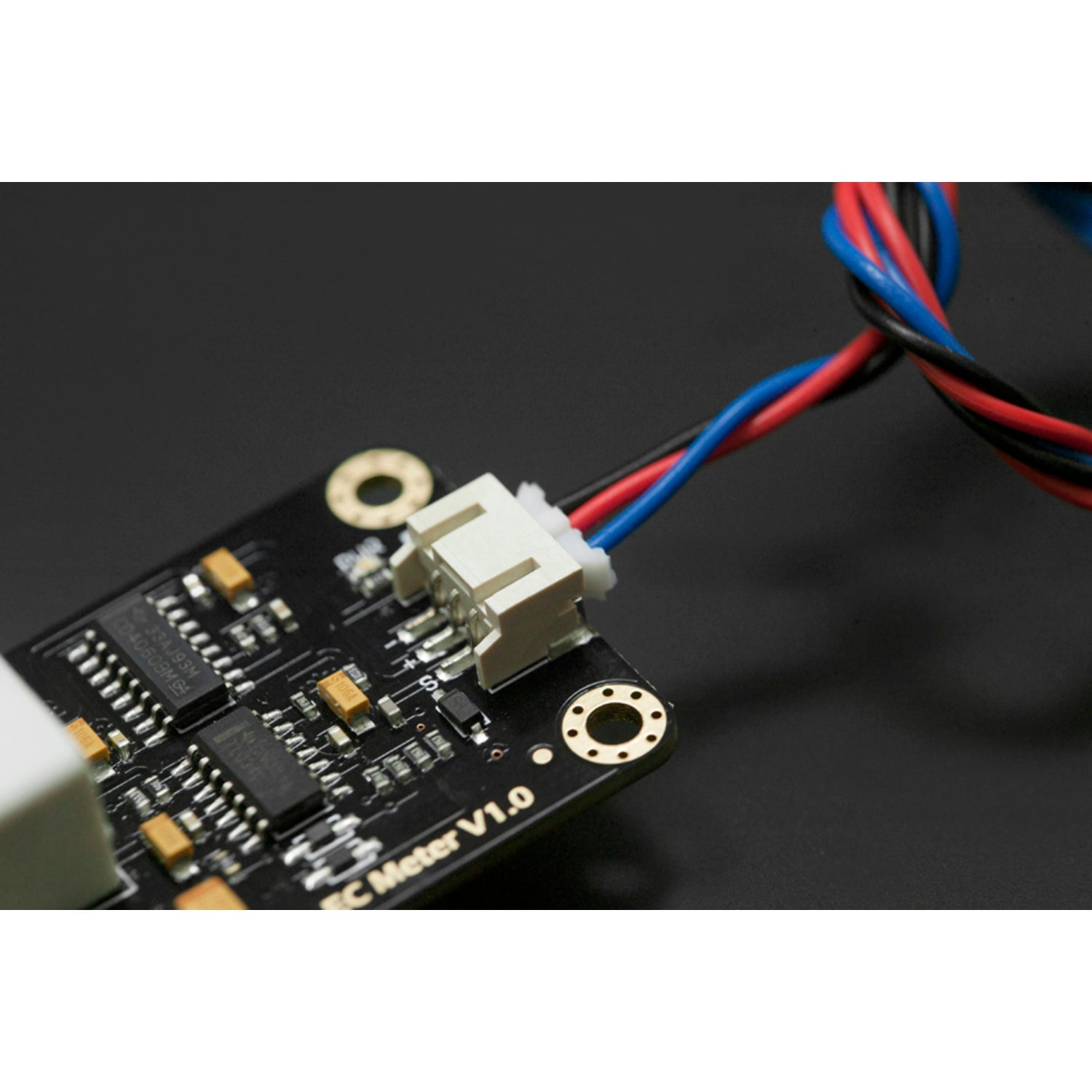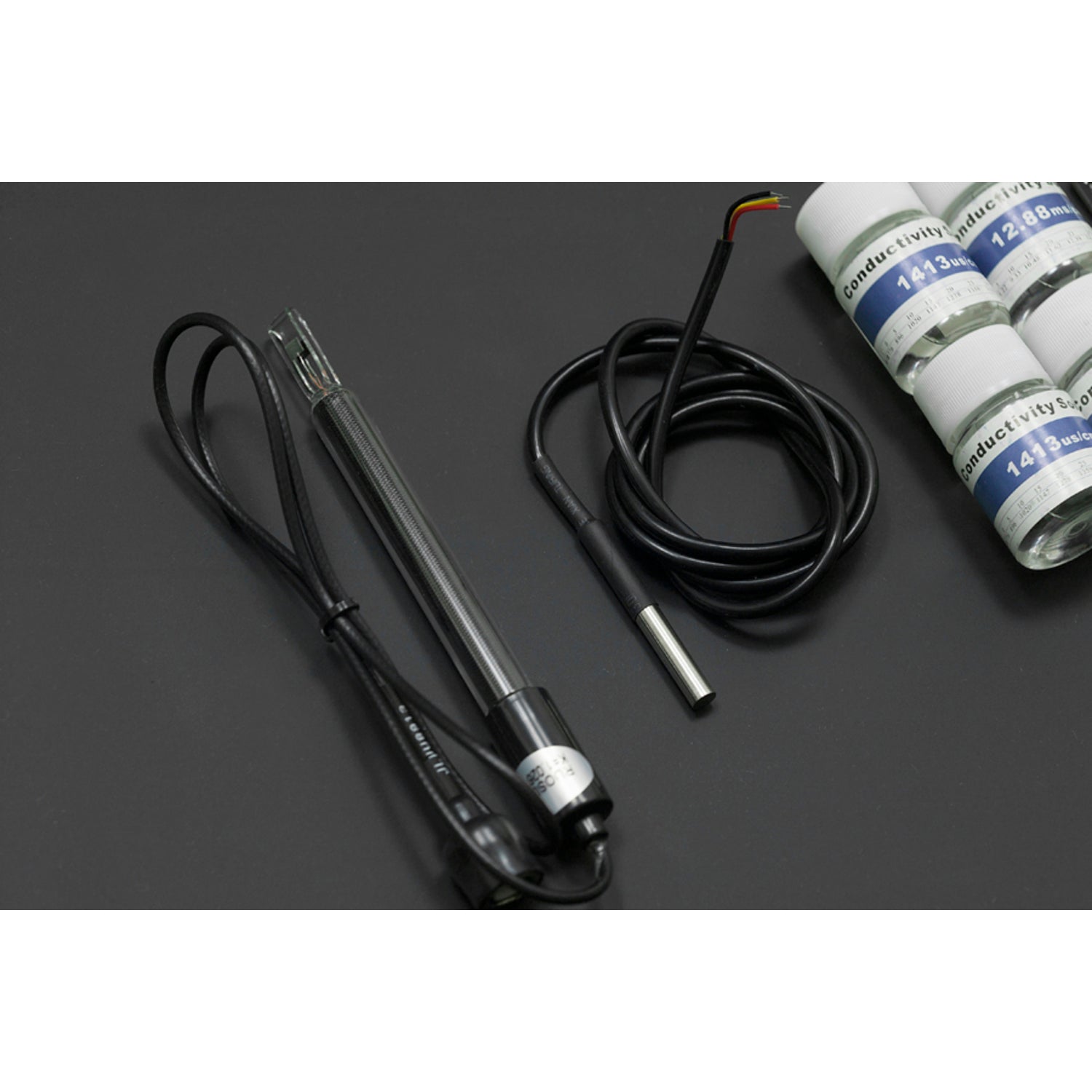Why measure EC? The salinity of soil, irrigation water, or fertilizer solutions is crucial for plant root zone environment. High salt levels signal a need for adjustment, while low levels can cause nutrient deficiencies. Measure early to avoid plant damage. In liquids, we use conductance (the reciprocal of resistance) to measure. Water conductivity reflects its electrolyte level, varying with electrolyte concentration. This Analog EC Meter is special. It's designed for Arduino controllers with built - in easy - to - use features. Just connect as per our diagram, upload the program, and you can easily measure EC values. A Gravity Interface is added for plug - and - play convenience. The Arduino IO expansion shield is the perfect match for connecting to your Arduino. Applications include water quality monitoring, aquaculture, and hydroponic & aquaponic systems. Specifications: Operating Voltage: +5.00 V; PCB Size: 45 x 32mm(1.77x1.26'); Measuring Range: 1ms/cm -- 20ms/cm; Operating Temperature: 5 - 40 °C; Accuracy: < ±10% F.S (using Arduino 10 bits ADC); PH2.0 Interface (3 - pin SMD); Conductivity Electrode (Electrode Constant K = 1, BNC connector); Electrode Cable Length: about 60cm(23.62'); DS18B20 Temperature Sensor(Waterproof); Power Indicator. Documents available are WiKi (Analog EC Meter), pH and EC Probe Holder 3D Model (by Rayuela), Schematic, and Electrode User Manual. Shipping list: Conductivity Electrode (BNC Connector) x1, EC Meter Circuit Board x1, Analog cable x1, DS18B20 Temperature Sensor (waterproof) x1, Terminal Sensor Adapter x1, Digital cable x1, Conductivity Standard Solution (1413us/cm and 12.88ms/cm) x1.


Using this Gravity Arduino EC Sensor/Meter is a breeze. First, connect it to your Arduino as shown in the provided diagram. Then, upload the program. After that, you're all set to measure the electrical conductivity values. When using it, make sure the operating temperature stays between 5 - 40 °C. Don't expose it to extreme temperatures as it might affect the accuracy. Keep the sensor clean and dry when not in use. The conductivity electrode should be stored properly, and you can use the conductivity standard solution for calibration regularly. If you're using the DS18B20 temperature sensor, ensure it's installed correctly and is waterproof. For any technical issues, refer to the provided WiKi and user manuals.